featuring:
Jimmy Shaw
- from:
-
¡Lotería! Grill
- recipe:
- Swordfish tacos al pastor + heirloom salad w/ jamaica reduction
405 N, exit Santa Monica Blvd, go right. Find 6627 Hollywood or look for the Hendrix star and exclamation points. ¡Lotería!
Vibrant colors and a thousand mini stories surround you on all sides, some big, some small. Don’t get Jimmy started unless you have time for a journey, he’s a real collector. He’s also a gentle human with a big heart and speaking of big… ¡WOW! THAT IS ONE GIGANTIC PINATA. Does it have the goods? How big is the stick and can I have a swing?
El Campeón statue stands proud and la Sirena calls us deeper. The tasty smells of peppers and pineapple tingle the senses as we head to the kitchen. It’s time for el Cocinero. Welcome to the Jimmy Shaw experience.
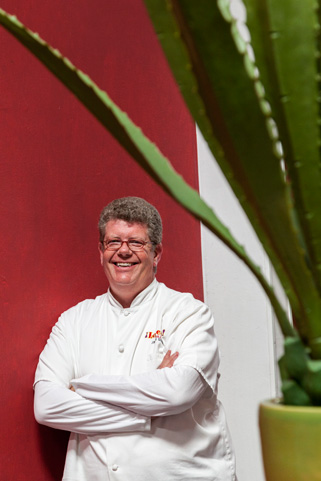

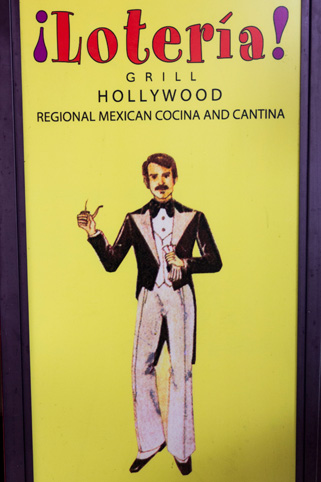

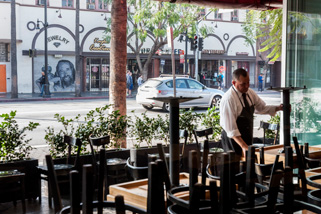





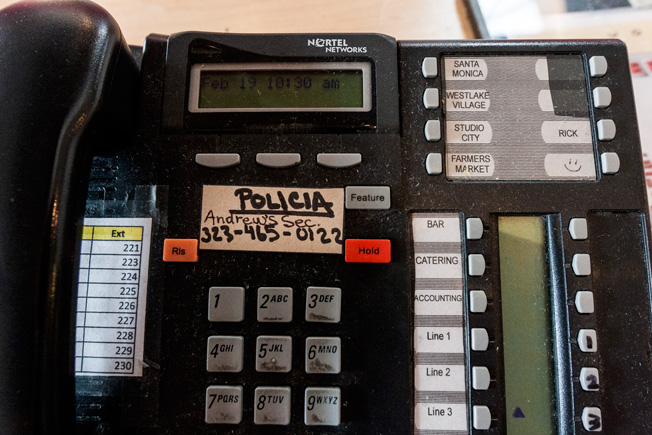

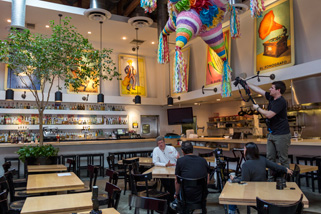

Are you a risk taker?
I open restaurants for a living. That’s the definition of risky.
[Laughing] What about in your food?
No, I’m not a huge risk taker. My goal with Loteria is always to show the Mexico that I grew up with. One of my first shocks when I came to the States was this notion that Mexican food had to taste like Tex-Mex, you know? That was defined within the first few days of arriving in the U.S. I think as a cook, I’ve always wanted to show what I consider the true food of Mexico, this delicious cuisine that had somehow gotten off the beaten path in this country. Am I risk-taking? No. I’m showing food that’s been around for centuries, loved for centuries.









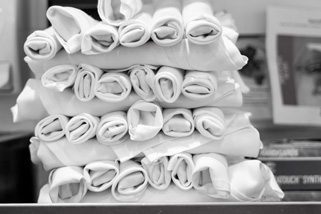



When did food capture you?
I remember being in Acapulco once as a kid and discovering three or four flavors together that I loved. We were in this little bay just south of the main bay in Acapulco. The beach is called Pichilingue. We were getting some clams that had just been brought up and we were putting on lime, a little fresh cut onion, and cilantro.
I must have been seven or eight—and onion and cilantro aren’t things your average kid really loves—but that combination and being right on the beach with a fresh clam and a little bit of chile… those flavors coming together were explosive to me. It’s funny, I never thought about it that way but that’s the moment I said wow, that’s amazing.



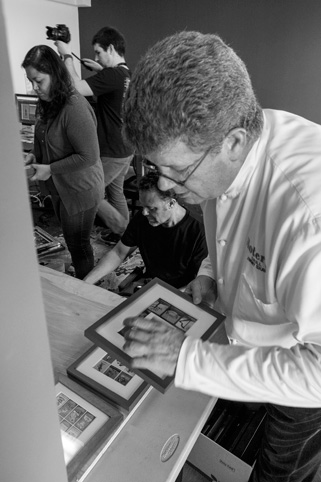

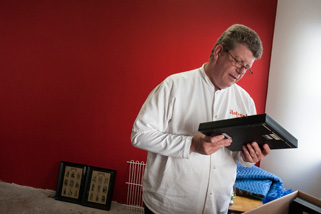




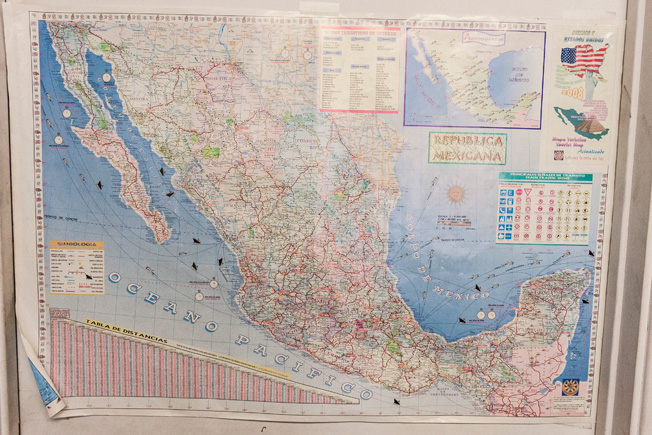

When did you know that food had power?
When I could go on a date at my house.
So that’s how you did it [laughing].
That’s how I did it [smiling]. One of the fun things about food is that it’s theater that gives you an instant read on your audience. Instant. You can transform a frown into a smile or a smile into a frown. You see the reaction immediately.
When people come into a restaurant, especially one like we opened at the farmers market that’s pretty casual and people can just pop in, often people come in hungry and maybe not as polite or tolerant as they otherwise might be. We had only been open three or four days and we screwed up on a guys order. He was sitting at the third stool at the counter. I don’t remember what it was, we put the wrong rice on his plate, but it gave him permission, he thought, to really come after us in a big way. F-bomb this and F-bomb that; fingers pointing over the counter. I said sorry, it’s our day number three, we goofed, we’ll get it right. Dinner’s on us. No really, dinner’s on us.
Now, if you’ve ever been to my place at the farmers market it’s 400 square feet, 18 by 21 or something like that. It’s itty bitty. So this guy is at one corner and Saul and I are behind the stove at the other corner and we see him. He takes one bite of dinner and his anger completely goes away. It was very cool. He looked up at me and he just smiled. That’s a very powerful outcome I think.


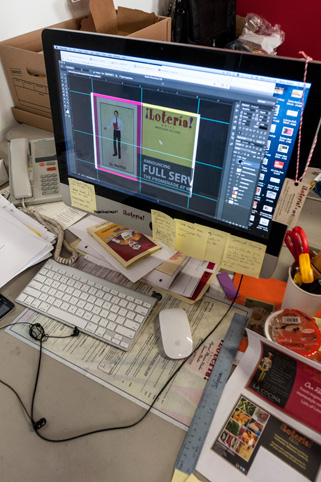




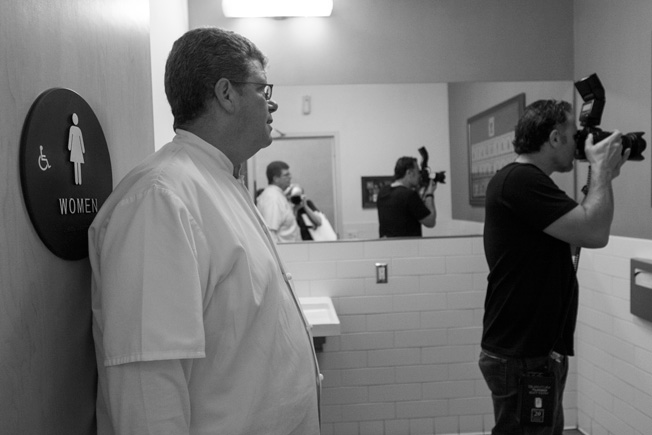

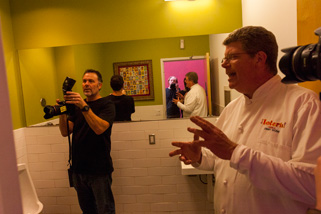
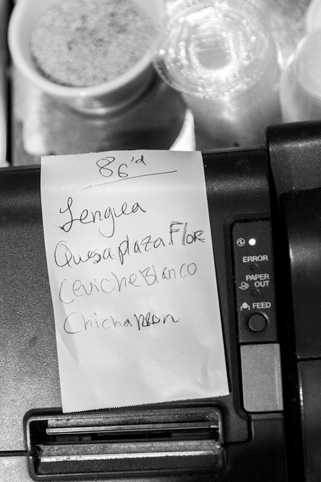



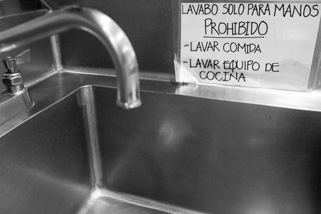


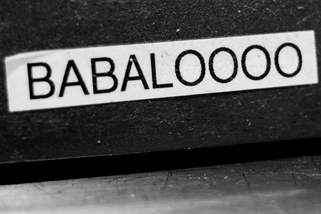
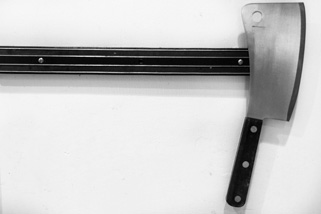



What makes a really good traditional Mexican dish?
That’s a big question, you know, Mexico is an enormous country with all kinds of climates and soils and altitudes. I think what makes a real Mexican dish is the real Mexican ingredients and knowing how to use them.
Mexicans have this a wonderful relationship with their chile. The chile will have it’s fresh form and it’s dry form, sometimes it’s smoked form. The jalapeño, for instance, in it’s fresh form is a jalapeño or a cuaresmeño, then in it’s dry form it can be a chipotle. Knowing how to use different chiles and knowing what you have to do with them is an important part.
But Mexican food is truly fusion food of centuries. If you think about today’s mole poblano, you think “that’s truly a Mexican recipe.” But mole was made originally by Spanish nuns for a viceroy to showcase indigenous and Spanish cuisine together. We’re talking about 500, 600 years ago. Mexican food has always been evolving. I mean, we got cilantro from Asia and we consider that very Mexican, don’t we?
So it’s taking those ingredients, wherever they come from, and knowing how to use them.
It’s funny, I was with my son a few years ago in Mexico and he fell in love with a Mexican candy, this kind of sweet, tart, umami kind of candy called chamoy. Chamoy is originally made with chabacanos, which are apricots. Pickled apricots with chile or salt. And if you go to Chinatown you can get chamoy there too.
At one point Mexico was the midpoint of trade between Asian and Europe, you know? Before the Panama Canal people didn’t want to go under South America so things would land in Mexico, go overland to Mexico City, down to Acapulco, and keep going. That’s where a lot of the influence comes from. Mexico has really borrowed from many different places. Our bread is very Spanish and French, we certainly have Dutch influence in the Yucatán. We didn’t have pork before the Spaniards got there and yet carnitas and cochinita are very, very Mexican. It’s knowing how to put things together. It’s resourcefulness.







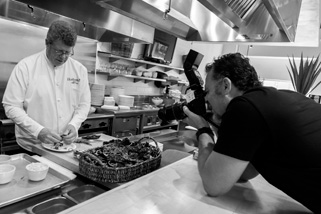







How did growing up in Mexico influence what you do today?
Oh, it defines me today. I was very lucky to grow up in an incredibly international city. Mexico City is an amazing place, it’s been a gathering of cultures for centuries. My school was bilingual so I was able to grow up speaking English and Spanish and when I arrived in the U.S. had a bit of a Mexican intonation, but not a strong accent.
So I ended up going to school in Philadelphia and lived there for a few years, then I moved to L.A. and was very excited to move to what I thought of as the number two Mexican city in the world, Los Angeles, right? If you think about Mexican population, Mexico City is number one, L.A. is number two, Guadalajara is three, and it goes from there.
L.A. had so much of Mexico but it was significantly different, and it was the things that I was missing from Mexico that led me down this path. What were the holes I wanted to fill? Part of it is having a date on a taco. Sorry, having a… you know, having a taco on a date. Having a date with a taco. You know what I mean.
[Laughing] Sure, took me a little bit though.
Sorry, English is my second language, remember. But in Mexico, no matter what city you go to and whether you have a couple coins in your pocket or a bunch of cash, a taco is a great date like sushi is a great date here. It was the idea of being able to go on a date for a taco that made me open up the first Loteria.










What’s the one tool you couldn’t live without in the kitchen?
Blender. That’s the national tool of Mexico. You could not cook Mexican food without a blender, today at least. Or you could use it’s parent which is a molcajete. Mortar and pestle.




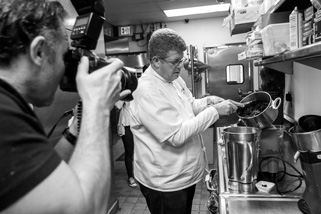



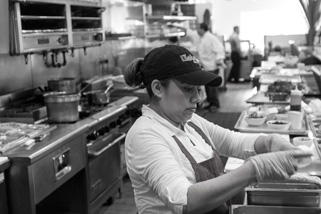


What’s your meaning of “no shortcuts?”
It’s how we approach this kitchen. For instance, when you make a mole—ours has 27 ingredients—it’s toasting every chile, it’s doing everything the way you would in a Mexican kitchen using American labor rates. There’s an interesting thing that happens to Mexican food which is what defines so much of it in the U.S. It is an incredibly labor-intensive cuisine, especially cuisine where you’re toasting chiles and doing things that require four or five steps before you can use the ingredient.
With a dried chile you have to stem it, seed it, devein it, toast it, maybe soak it in water, blend it, and then cook it. You’re not pulling a paste out of a can or simply chopping onion and garlic. There are paste versions that could get you six steps ahead, but we wouldn’t do that. It’ll have just the right amount of the wrong spice and hit the wrong flavor, so you have to do it yourself.










Is your cooking influenced more by your mother or father?
My mother. My mother is very funny, she was born in Mexico City but raised in Havana. See, my grandfather was an American who went to work in Mexico, got married, had 3 children and was raising them when the Mexican government expropriated the oil companies. Since he was an American he was essentially kicked out of the country and his company, Sinclair Oil Company, moved him to Havana.
So my mother was on Christmas vacation back in Mexico City when my dad was introduced to her. When she married my father she was 21 years old, I think, and didn’t know how to boil water. My mom is so funny, she had never cooked a day in her life. So my parents lived in a little apartment in Mexico City about a half block away from my great grandmother who was from Oaxaca, a Spanish and French family, so that’s where my mom learned to cook.
There’s a great saying in Spanish when you arrive with a couple extra friends that goes “don’t worry about it, I’ll just throw a little more water into the soup.” There’s enough to go around. That was my mother’s philosophy, and she made amazing food. Every once in a while there was a goof, but going back to your earlier question if I’m a risk taker, I think in that sense my mother taught us to trust yourself in the kitchen enough so every once in a while you can make one plate that maybe doesn’t need to be repeated [laughing]. So yes, my mother. She’s an amazing cook.






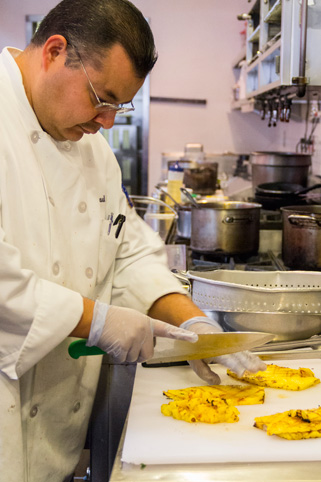




How important are the local farmers markets?
Tremendously. We work with a couple different farmers directly on certain things, like squash blossoms. Squash blossoms in Mexico are huge, a great culinary treat, and the two types of restaurants who use it most in L.A. are the Italians and the Mexicans. The Italians have the huge advantage that they can take one blossom, stuff it, batter it, and sell it for six or eight bucks. I have to take 20 blossoms and maybe I can make a couple tacos and sell them for four or five bucks [all laughing].
It’s funny, my favorite thing is on Sundays or Wednesdays when we go down to the Hollywood or Santa Monica Farmers Markets and buy sometimes 50, 60,100 pounds of squash blossoms. You should see it, it’s like Santa Clause coming to town, walking down the street with these enormous bags, essentially trash bags of this amazing delicacy. We lay them out here and it’s a show for two or three days just cleaning them.
Tomatoes are another huge part of what we do with farmers. Tomatoes came from the Americas then went to the rest of the world. So much of great Mexican cuisine is based on great tomatoes. In August we have an entire tomato celebration here. And there’s certain chiles that are hard to get, you know? One of my favorite chilis is called the manzano. That one is tough to get sometimes so you have to work with the farmers.
So you know when it’s coming in and you can plan ahead?
Yeah or we ask certain people to grow it for us. More and more I think the idea of sourcing as locally as you can just makes a lot of sense. It’s good for both of us.





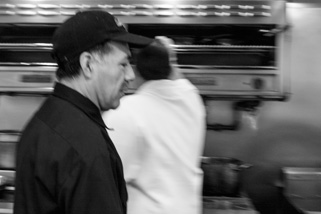










We heard you say somewhere that “tacos need to breathe.” What’s that mean?
I said that? [All laughing]
Yeah, something about them being wrapped too tightly in foil.
Oh, in foil, of course. Context. I didn’t know if you were talking about a fine wine. OK. Yes. Here’s the thing: this entire restaurant is about chance, about serendipity. I came from Mexico to the U.S., I went to Penn. I was privileged to go to a great university and then you’re expected to get an important, serious job.
While I was in college I started cooking because I had to pay my American bills on my dad’s Mexican salary. The peso had been devalued significantly, from 12.50 when I arrived at university to in excess of 20 or 30 by the time I was out. So to buy every dollar was two or three dollars of work. That’s when I started working in restaurants and became a private chef for a family. That’s when I got my cooking chops.
Then I got a “serious” job, working for the same family, who were filmmakers. I started working in production, doing commercials and videos, but I needed a green card so I went to work in Spanish language advertising in L.A. I kept up my cooking and my friends would say “open a restaurant, you’re wasting your time.”
So I had this great, cushy career starting as a junior executive and ending up as a senior guy with big job offers, but I hated it. The idea of going into this environment on Monday just wasn’t fun. Production was fun, one day I could produce Coke and the next day Pepsi, but when you work in an agency it’s one or the other. I liked the creative part but didn’t enjoy the rest. So I always had this elusive dream to own a restaurant, who doesn’t want to own a restaurant?
So I was coming back from the East Coast this one time and I was so upset about a meeting we had. We presented this great idea that got rejected for what I thought were all the wrong reasons so on the flight back I pounded out a one-sheeter on the computer, the idea of what Loteria would be.
This was my pitch, which I pitched a bunch of times at my house with friends over, maybe after a couple too many tequilas. There would be three elements. First thing: it wouldn’t have any of this beef taco, chicken taco combo plates. It would be a deep menu of regional guisos. Stews and sauces that would reflect the real Mexico.
You can only order ‘carne asada’ in northern Mexico. Using the same words in English, you know, go into a restaurant and ask for “grilled meat.”
Sure. [Laughing]
“Hey, do you have any grilled meat?” When you go to a place in Mexico it’s carnes asadas, grilled meats. And what cut is it? Bistec, alambre, costillas? You go to a steak house and get a New York cut, porterhouse, whatever. Mexican food is so much more than this carne asada. So that’s number one.
Number two is don’t hide my taco man, mi taquero. I want a place where I can go for tacos on a date, right? It’s not a cool date when you’re putting it on a tray. It just isn’t.
[Laughing]
It doesn’t matter if it’s on the street or your neighborhood taqueria, tacos are sold like sushi, it’s a la carte, one or two at a time. It’s interactive. That’s what makes it a date.
So my first day in L.A. this lady in my accounting department said “hey, let’s get some tacos down the street.” Ah, absolutely. I needed that smell of corn tortilla in my hand.
So we went down and as I was paying she said “get them to go, we have a meeting.” So I did, and when we got back to the office, which was a few blocks away, I opened up my clamshell and gasped for air because my tacos were wrapped in foil. When tacos are wrapped in foil they get soupy and gross. You can cover the plate, but the tacos need to be left open, they need to breath. That’s not understanding how the tortilla works. It’s like when people microwave the tortilla. That’s not how you do it.
[Laughing]
[To Rita, looking guilty] Do you microwave your tortillas? Shame on you.
[Rita, laughing] No, no. Costco has them uncooked and you put it on a pan…
Ah, that’s cool. You know there’s one thing that a microwave is good for, that’s toasted tortilla. Run a corn tortilla in a microwave and pull it out every minute to flip it over, for two or three minutes. Amazing tostada.


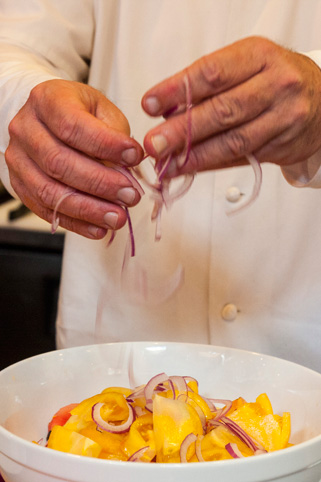











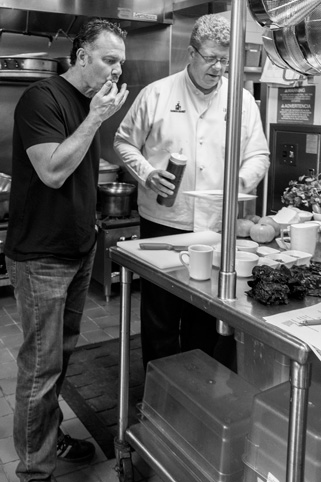









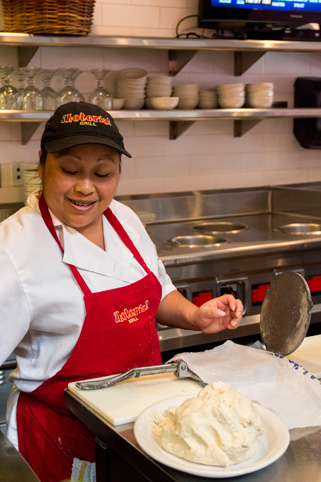

Who would you most like to cook for and why?
[Pausing to think] Let’s come back to that one. I can’t answer that one right now.
What’s your creative process when creating new recipes?
I think it starts with a craving. Where’s my craving? It’s a funny thing that happens. Usually I’ll develop something with two or three people and I use events, like a charity event, to try out new things and if people are liking it we’ll throw it on the menu.
One of my favorite tacos, it’s off the menu but many people know about it, is the cochinita gringa. It’s a cochinita pibil, a wonderful recipe from the Yucatán. In it’s true form it’s a pit-cooked pork that’s marinated with certain spices and citrus, wrapped in banana leaves, slowly cooked and then it’s pulled. So one day I wanted a cochinita pibil and I wanted a potato taco, but I didn’t want both, so I mixed them. Out came something that was really great and I called it cochinita gringa under the notion that Americans really like meat and potatoes.
My mother somehow infected all four of her kids with this love of the kitchen. My oldest brother, Ian, had a restaurant in Mexico City for many years. My second brother Andy has been in the restaurant business longer than any of us and he and I just partnered and opened up a Mexican sandwich place downtown called Torta Company. My sister Cathy is a chef and caterer in Mexico City. Food is part of our thing. Sometimes we’ll throw out an email to the other siblings saying I just tried this recipe and it was great or my mom will tell us to try something.
So mom’s still involved?
Very much. As an inspiration and certainly as a rallier. It’s funny, she cried when I told her I was opening a restaurant, and not out of excitement. “Don’t do it.” But now she’s happy.
So who would you most like to cook for?
I’d most like to cook, in this room, for my dad.
Why your father?
[Pausing] He died six weeks before we opened.
Ah. I’m sorry to hear that.
[Pointing to the front left corner of the dining room] Every week I take a picture from that corner behind you. I send him a picture. And if you see right here [pointing to the floor near our table] the concrete is a little bit different. When he died, I pulled up the concrete and buried a bottle of tequila for him [smiling wide].
No way. That’s great.
[Removing his glasses to wipe his eyes] Sorry, it’s a cry of happiness. But yeah, my dad.
What would you make him?
Cochinita gringa. He loved our cochinita gringa. When he went to Farmers Market [pausing] that was his favorite. Sorry to…
No, thank you for sharing that. Does your mother still live in…
Mexico City, yeah.
Does she get to visit much? Or call you up and give her input?
She’s not in shape to travel anymore, but we talk all the time. You know, when I was a junior in college, I had worked in restaurants as a busboy, maybe tossed two or three salads and had a couple days of line time. Nothing. But at that point I thought I was good enough to be a private chef. You know, the hubris of a 20-year-old, and I think it was my mother’s fault. She was the one that said “if you can read, you can cook, go for it.”
She was my partner in crime for a while there. The couple I worked for, Ellen and Garrett Brown—she was a producer, he’s a filmmaker and invented the steadicam, got an Oscar for it, dear friends to this day—Ellen would call me in the morning and give me a country or a meat, a protein, and say today we want fish, or something Italian, or this or that. So I would hang up the phone in Philadelphia and call my mom in Mexico City. And this is 1981 so it’s two bucks a minute, right? I’d call and say “OK mom, this is what they want” and she’d say, “OK, call me back in a couple hours.”
I’d call back and she’d direct me to something in a cookbook we shared or say to make something in particular. Then I’d go to the Reading Terminal, a permanent farmers market with a lot of Amish farmers who would bring their produce and dairy, Mennonite cheeses and those things. Great fishmongers and butchers and bakers so I was able to source really great food for them.
That was fun and my mom was a big time partner in that. But that’s American cooking, you know?

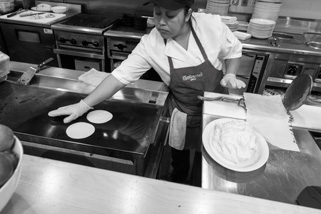



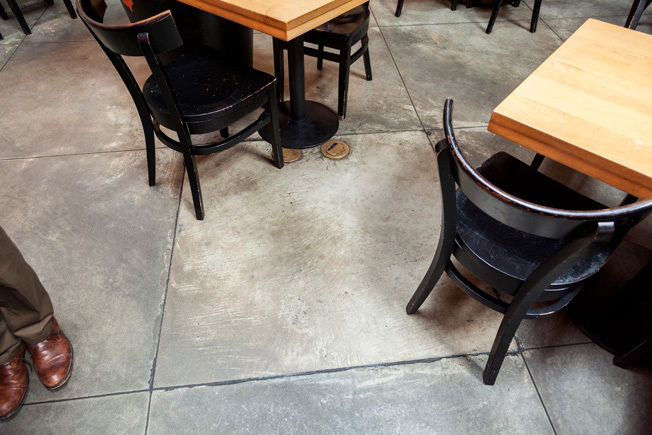
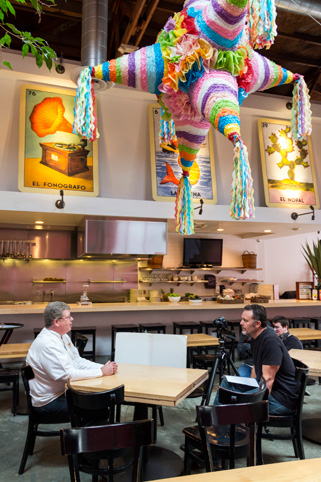





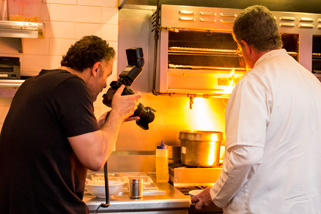


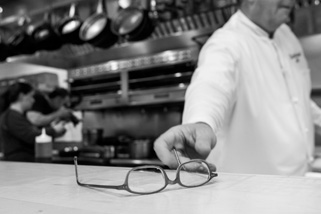

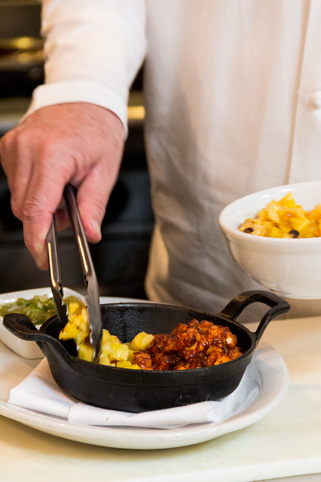
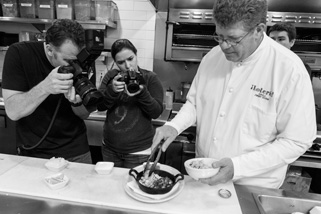

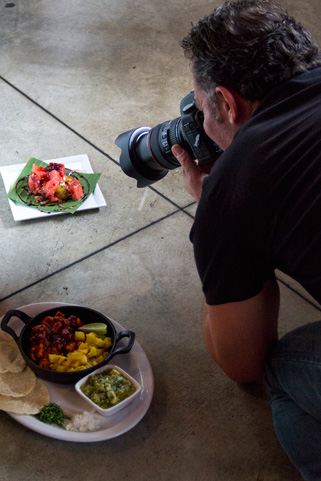





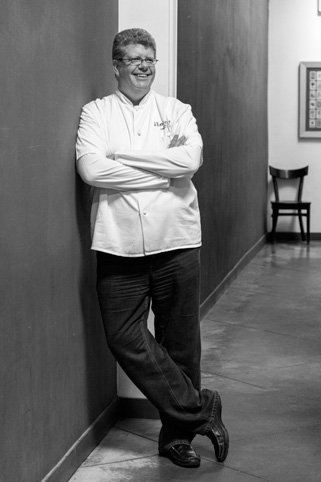
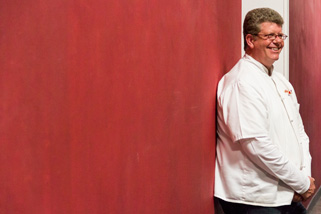



the recipe:
Swordfish Tacos al Pastor (Cazuela de Pez Espada al Pastor)
- For the Adobo Puree
- 0.5 oz. dry chile pasilla
- 0.25 oz. dry chile guajillo
- 1/2 c. fresh pineapple
- 1 garlic clove
- 1/3 c. white onion
- 1 pinch each of sugar, cumin, salt & black pepper
- 1/2 whole clove
- 1.2 fl. oz. white distilled vinegar
- 1 tsp. vegetable oil
- 1/2 c. approx water where chiles soaked
- For the Fish:
- 1 lb. swordfish cut in cubes
- 1 tbsp. finely chopped onion
- 6 fl. oz. adobo puree recipe
For the Adobo Puree
- Clean dry chiles. Remove seeds.
- Place chiles in a bowl, cover with hot water and let stand until softened.
- In a blender place drained chiles with rest of ingredients and 1/2 c. of the water where chiles soaked to make a puree.
- Heat a pan with the vegetable oil. Add Adobo, mix well. Simmer for 10 minutes
For the Fish:
- Place onion in a hot frying pan with vegetable oil.
- Add fish and sauté for 5 seconds.
- Add Adobo and finish cooking for 3 more minutes.
How to serve:
This fish combines great with roasted pineapple chunks, tomatillo salsa, rice & beans.
Heirloom Salad
- 1 lb. of Heirloom tomatoes cut into wedges
- 1.5 lb. watermelon cut into cubes
- 2 fl. oz. extra virgin olive oil
- 4 fl. oz. jamaica reduction (recipe below)
- 6 oz. feta cheese, crumbled
- 1/4 red onion, thinly sliced
- Wash and dry the tomatoes and watermelon.
- Cut the tomatoes into 1/2" cut into wedges and place them into a large salad bowl or platter.
- Cut the watermelon into 1" square and add to the bowl.
- Drizzle with the olive oil.
- Add the feta and onion.
- Drizzle the Jamaica reduction evenly and freshly ground black pepper.
Jamaica Reduction
- 2 c. of water
- 1 c. of red wine (Merlot/Cab)
- 1 1/4 c. granulated sugar
- 1/2 cup dried jamaica (hibiscus flowers)
- 1 ea Sunkist orange
- Cut 2 large strips of orange rind (approx. 1'x 2"). In a heavy stewpot, combine the water, red wine, sugar and orange rinds and bring to a full boil. Add the Jamaica and keep over low heat for 15 minutes.
- Strain the liquid and return to the stewpot on low and medium heat to reduce. Keep refrigerated in a squeegee bottle. You'll want to use it on everything.
